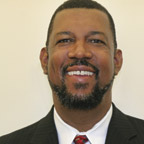A 21st Century Skills Gap

Business and industry continue to feel firsthand the skills gap between what students are learning in school and what they actually need in order to be competitive in the global economy.
A recent survey by the International Center for Leadership in Education and MetaMetrics utilizing Lexile Framework for Reading data, which matches readers with texts of appropriate difficulty, revealed interesting results. The skills students were learning in school were not necessarily the skills needed to be successful upon graduation.
For example, the text readability measures of four-year college textbooks, community college textbooks, community/technical college textbooks, armed forces, personal use/adult role and entry-level occupation reading materials are set at a higher reading level than more than 75 percent of the high school literature, high school textbooks and college-level literature. In fact, 10 years ago, the SAT and ACT were highest on the reading comprehension scale. The materials that are highest on the reading comprehension scale today include military manuals, personal-use reading materials such as insurance and instruction manuals, and entry-level job occupations (training manuals). Literacy in the context of work requires better technical reading skills. Students need to be exposed to a variety of texts, not just reading materials from content areas.
A second survey, the National Essential Skills Study, asked business and other non-educators, high school educators within a specific subject area (language arts, math, science, social studies), and educators outside the subject area what skills were most important under each of the subject matters. The skills that were used in the survey were from national and state skills standards that are currently being taught in schools. Sample results include the following:
Language Arts Skill: Write clear and concise oral directions. Out of 50 language arts skills, business ranked this skill’s importance as 6th. Language arts teachers ranked this skill’s importance as 30th. Other non-educators and other educators ranked this skill’s importance as 12th and 10th, respectively.
Math Skill: Apply the Pythagorean Theorem to right angles. Out of 70 math skills, business ranked this skill’s importance as 25th. Math teachers ranked this skill’s importance as 6th. Other non-educators and other educators ranked this skill’s importance as 31st and 25th, respectively.
This study would indicate that a gap exists between what subject matter educators view as important for students to know to be successful upon graduation and what the business community and others view as important to know to be successful in the global economy.
Education and training are expanding throughout the world. Technological advances require additional workforce skills. According to Dr. Willard Daggett, president of the International Center for Leadership in Education, there were more students registered in Fall 2009 in California’s community colleges with four-year degrees than two-year degree students registered at four-year universities. This trend may be due to the recession and layoffs of degreed professionals, or these individuals are attending community college to pick up the skills needed to remain employed.
Locally, the Workforce Network has assisted an additional 126 individuals in 2009 with a bachelor’s degree or higher than in 2008. This represents a 75-percent increase in individuals with college degrees seeking job placement and skill training assistance.
In order to maintain economic prosperity in the region, solutions to today’s skill challenges must be developed in partnerships with education, workforce, labor and the business community. iBi

